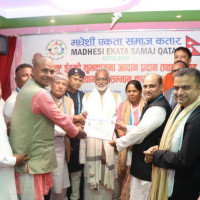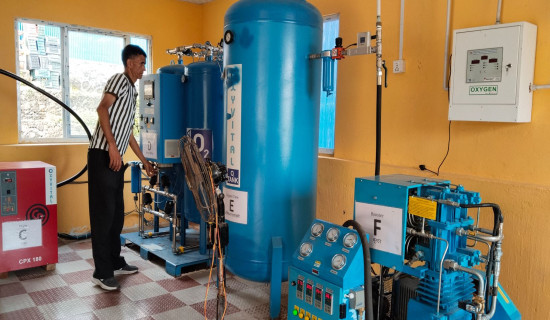- Tuesday, 10 June 2025
Testimony Of Nepali History In Thailand
Nepalese, known as Nepali or Gorkhali in different parts of the world, share a migration history spanning over a century, contributing to the development of new histories in various places. They have settled in countries that are both advanced and struggling economically, residing in both large and small nations. Geographically, it appears that there is hardly a place untouched by the Nepali presence in terms of distance from Nepal.
Thailand, one of the world's oldest countries, boasts a rich history of hosting people from diverse backgrounds, including Nepalis who began identifying as Gorkhali in the late nineteenth century.
That generation is no more, but the descendants of the generation that reached Thailand after walking for 45 days from Nepal still tell stories of their journey.
This migration from one ancient country to another reflects their ability to preserve language, customs, culture, tradition, and religion in the modern world. Notably, during World War II, the British deployed Nepali troops to combat the Japanese army in Myanmar, leading to subsequent settlement patterns in Thailand, particularly in the mountainous Pilok region where mining activities commenced.
Despite the absence of authentic written documents, it is widely believed that the history of Nepali settlement in Thailand originated during this period. Over time, Nepalis in Thailand integrated into the local culture, establishing themselves in occupations such as mining, farming, business, and both private and government services. Presently, they reside in various locations, including Bangkok, Phuket, Pilok, and Kanchanaburi. The Nepalis who settled in Thailand at the initial stage have been completely integrated into Thai society; they have assimilated into Thai society and culture. They live as if they belong to Thai society and culture. Even though they have spent such a long time together, they have kept their Nepaliness alive.
The book, titled 'History of Nepalis in Thailand,' authored and edited by journalist Ramesh Khadka and published by the Thai Nepali Association, endeavours to disseminate the facts of Nepali immigrants in Thailand from historical origins to the present. Despite challenges in uncovering the true history of Nepalis in Thailand, the book addresses questions regarding their arrival, motivations, occupations, and the challenges they faced, shedding light on their journey to becoming Thai citizens. In this book, not only the statements of Thai Nepalis about the Nepalis living in Thailand but also the statements of Thai residents themselves are incorporated. They mentioned that Nepalis are good and hardworking.
Thai citizens consider friendliness and helpful behaviour to be the hallmarks of Nepali people. This book can be considered a reliable document of the past of Thai Nepalis who are suffering from various educational, social, economic, and ethnic reasons.
The book has exposed various aspects of the history, culture, tradition, geography, and nature of the places where the Nepalis have lived in Thailand. It is said that the presentation of pictures is broader and more effective than that of letters.
Yes, this is what is found in this book. The pictures show the villages where Nepalis lived and the places where they worked. In the book, pictures of the ancestors who started Nepali settlements in Thailand, the previous generations of Nepalis, the educational condition of that time, and the social, economic, and religious conditions can be seen.
The pictures of the houses where the Nepalis live in Thailand and the graves after death are also included in the book. In this book, which presents the reality of Thai Nepalis, diplomatic, religious, touristic, and cultural relations between Nepal and Thailand are also mentioned. The Thai Nepali Association, which is active in various facets of the Thai Nepali people, has also been highlighted for its establishment and ongoing efforts. The appendix section further confirms the credibility of the book as a whole.
This historical book breathes life into the decades-long history and identity of the Nepalis in Thailand, offering a window for the present generation to study the lives of their ancestors. Beyond that, the book serves as a valuable tool for fostering connections, kinship, and intimacy with their homeland, facilitating cultural, literary, and professional relations for Nepalis in Thailand.
The inclusion of photographs, historical documents, and direct statements further authenticates the history and present status of the Nepalis in Thailand.
Kudos are extended to Ramesh Khadka, journalist, author, and writer, for producing such a meticulously researched book. Appreciation is also due to the Central Committee of the Thai Nepali Association for their responsibility in the publication.
Let's hope that this work serves as a catalyst, inspiring researchers to explore and investigate the history and current situation of Nepalis living in other countries worldwide.
(Uprety is a poet, critic, and travelogue writer.)















